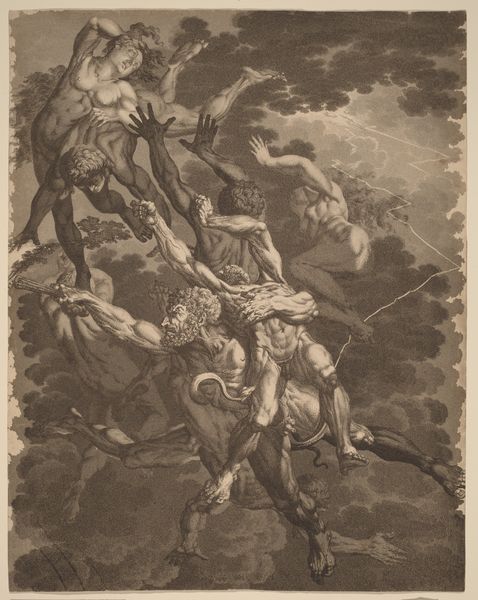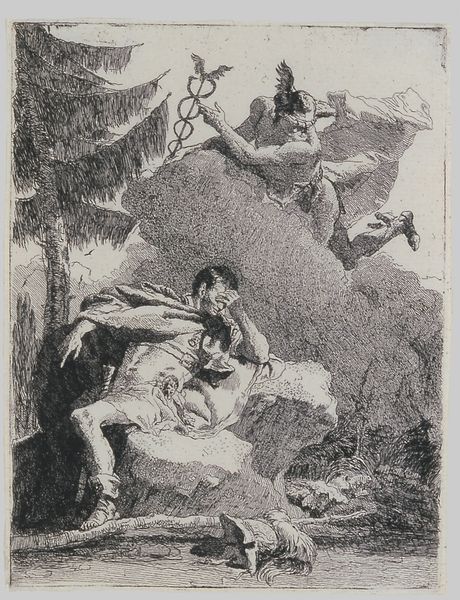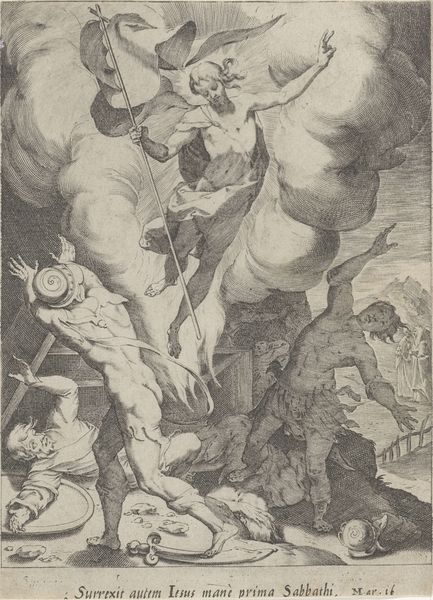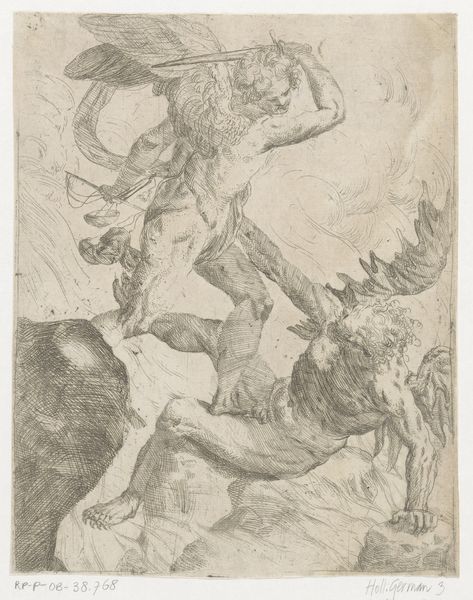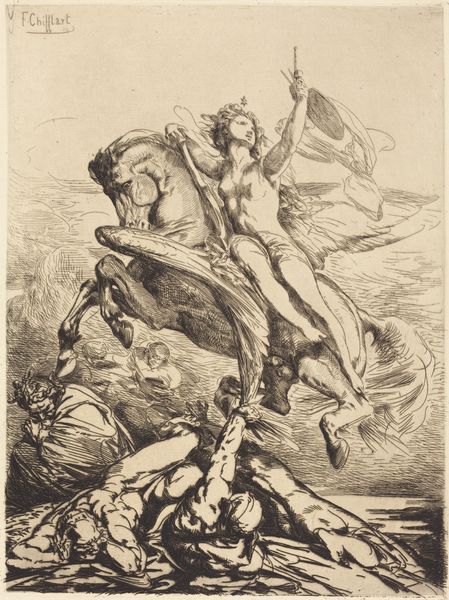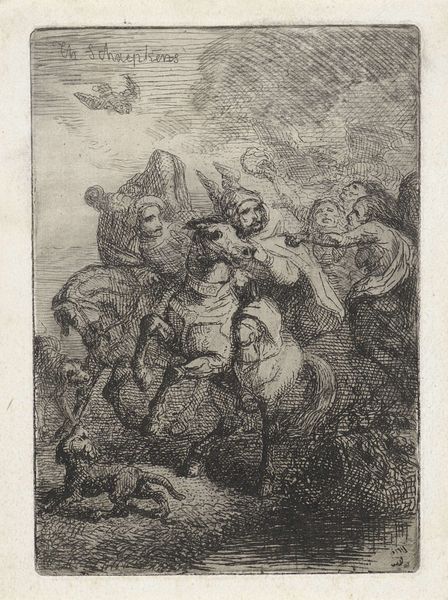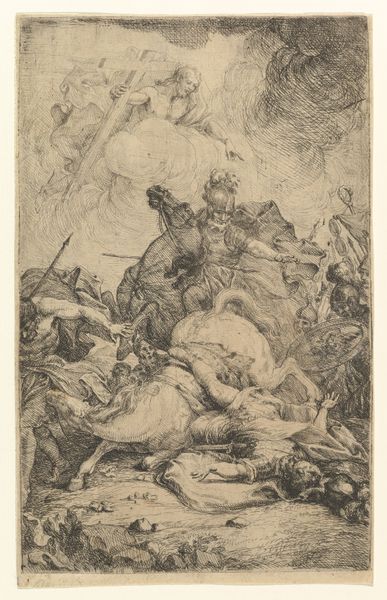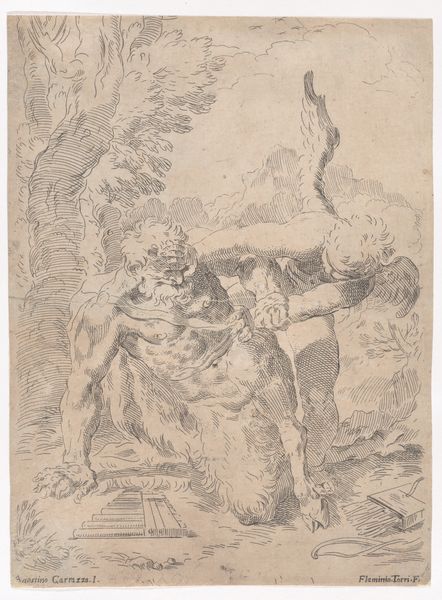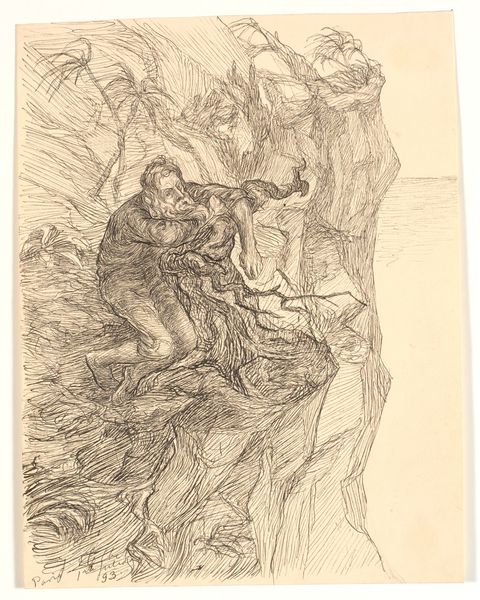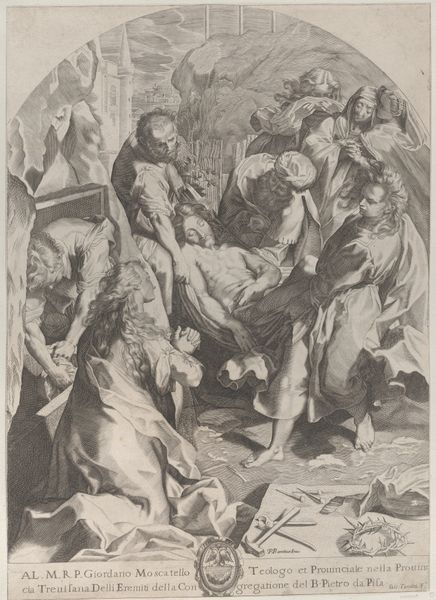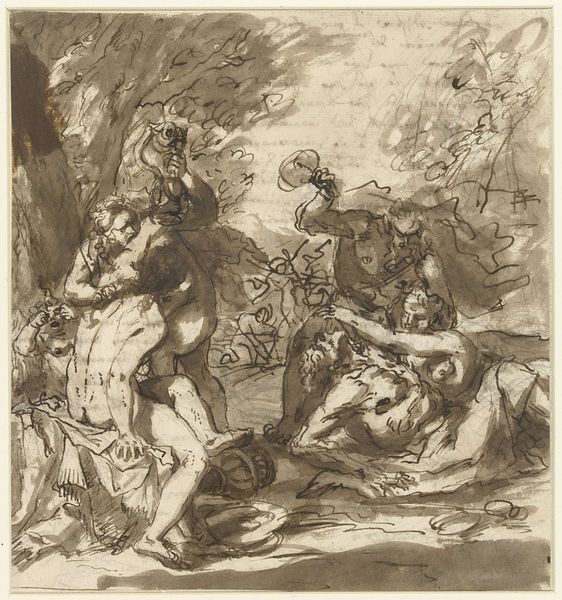
Dimensions: overall: 23.9 x 31.9 cm (9 7/16 x 12 9/16 in.)
Copyright: National Gallery of Art: CC0 1.0
Editor: Here we have "The Silver Devil," an etching and ink drawing made in 1865 by François-Nicolas Chifflart. It’s, um, chaotic, isn’t it? Like a struggle caught in a dream, everyone intertwined. What do you see in this piece? Curator: I see echoes, Editor, deep resonances. Consider the Devil, prominently placed. Is he dispensing riches, or perhaps illusion? Look how those below writhe, caught in desperate grasping. This speaks to the duality inherent in symbols of wealth and power. Does it liberate, or enslave? Editor: That’s interesting. It feels very… Romantic. The drama, the raw emotion… But what’s with the figures in the back, floating almost like an afterthought? Curator: Ah, precisely! Those ethereal figures above, are they witnesses? Perhaps ideals? They offer a contrasting vision, untainted by the earthly struggle below. This division emphasizes the internal conflict; the spiritual versus the material, always at odds within the human psyche. Editor: So the "silver" in the title isn’t just about material wealth? It's symbolic of something else entirely? Curator: Indeed. Silver often represents something less pure than gold, yet still alluring. A deceptive gleam. Consider how light plays across the figures – those illuminated by the Devil's "gift" appear contorted, while those in shadow may retain a different sort of… integrity. What do you make of that contrast? Editor: I never thought of it that way. Seeing the silver as temptation makes a lot of sense in contrast to the floating figures, the pure or ‘ideal’ witnesses that you described. Curator: This piece reminds us that symbols aren’t static, Editor. They morph and transform across time and culture. Editor: Definitely something to keep in mind, symbols carry history within them!
Comments
No comments
Be the first to comment and join the conversation on the ultimate creative platform.
